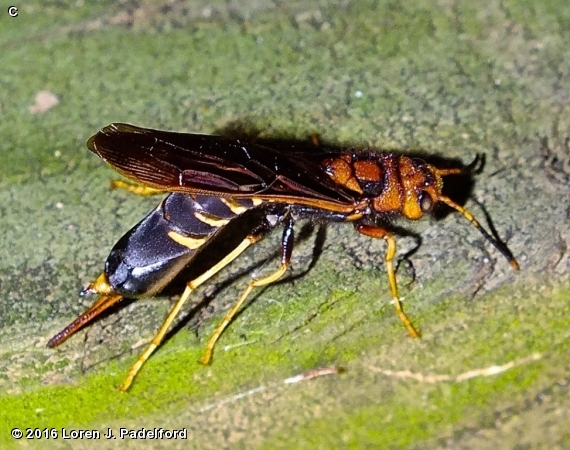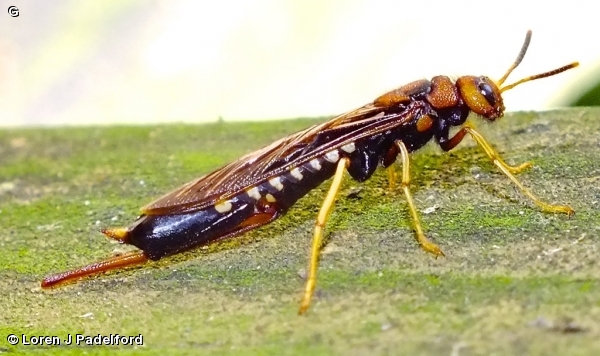
This large, colorful wasp is 1 1/2 Inches long, excluding appendages. On the female the head and thorax are red, and the cylindrical abdomen is black with prominent yellow discontinuous cross-bands. The antennae are yellow and black with red tips. The wings are dark brown. The legs are mostly yellow. Both sexes have the short yellow appendage or “horn” at the tip of the abdomen (photo A) which gives the species its name. The male is long and slender and mostly reddish-brown in color. His antennae are black. The legs are mostly black.
Adults are uncommonly seen in late summer and fall on dead or dying tree trunks.
The thin black appendage extending down from the middle of the abdomen is the ovipositor (photo A). The female uses the ovipositor to bore a hole in dead or dying hardwood trees. She lays one egg in each hole. The thicker orange appendage is only found in Siricid wasps. The female uses it to inject a wood rotting fungus that makes it easier for the larva to chew tunnels in the tree. The larva feeds up to 2 years, then pupates in a cocoon under the tree bark. The Horntail larvae are parasitized by Ichneumon wasps of the genus Megarhyssa. Even though they look threatening, these wasps are harmless to humans.
The content of NatureSearch is provided by dedicated volunteer Naturalists of Fontenelle Forest who strive to provide the most accurate information available. Contributors of the images retain their copyrights. The point of contact for this page is: Loren Padelford.






